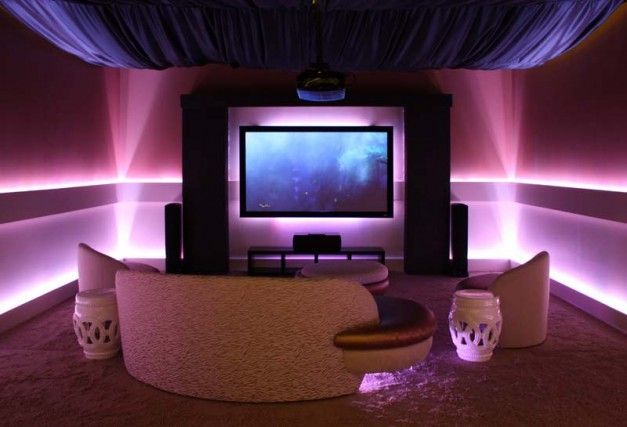 We’ve been hearing a lot about new TV technology lately; 4K, and of course 8K. But with all the hype on the pretty pictures, it’s easy for home theatre audio to feel left out. There have been some significant advances in home theatre audio in the last little while, so let’s dig in to see what’s new and what the technology could do for you. (To read more about the new TV tech we’ve been learning about, check out our series.)
We’ve been hearing a lot about new TV technology lately; 4K, and of course 8K. But with all the hype on the pretty pictures, it’s easy for home theatre audio to feel left out. There have been some significant advances in home theatre audio in the last little while, so let’s dig in to see what’s new and what the technology could do for you. (To read more about the new TV tech we’ve been learning about, check out our series.)
New TV & Audio technology: Wireless everything
For starters, the term “wireless” is a bit of a misnomer when it comes to speakers, since you’ll usually need to plug them in to an AC power source, so there is one power cord to contend with. Speakers like the Sonos line is an example of wireless speakers that will connect to your music using Wi-Fi or Bluetooth, and in this case “wireless” refers to the lack of speaker wire that will be strung like a spider’s web around your baseboards or across the carpet. And while no wires is a big pro in most cases, there may be other considerations.
 There are ‘wireless’ speaker packages, where you’ll still need a separate amplifier module for the surround speakers. How does that work? As one website explained it, “the main receiver unit has a built-in amplifier that physically connects to the left, center, and right front speakers, but has a transmitter that sends the surround sound signals to another amplifier module that is placed in the back of the room. The surround speakers are then connected by wire to the second amplifier module in the back of the room. In other words, you have not eliminated any wires, you have just relocated where they go.”
There are ‘wireless’ speaker packages, where you’ll still need a separate amplifier module for the surround speakers. How does that work? As one website explained it, “the main receiver unit has a built-in amplifier that physically connects to the left, center, and right front speakers, but has a transmitter that sends the surround sound signals to another amplifier module that is placed in the back of the room. The surround speakers are then connected by wire to the second amplifier module in the back of the room. In other words, you have not eliminated any wires, you have just relocated where they go.”
So while there may be less wires than many years ago to content with (and tidier rooms as a result) we haven’t truly reached full wire-free status just yet. But things are improving to the point where kissing the cord goodbye can’t be far off. For proof, just look at the wealth or portable Wi-Fi Bluetooth speakers that run off battery power. This is proof of just how far things have come and where they could be going. And speaking of size….
Honey, I shrunk the speakers!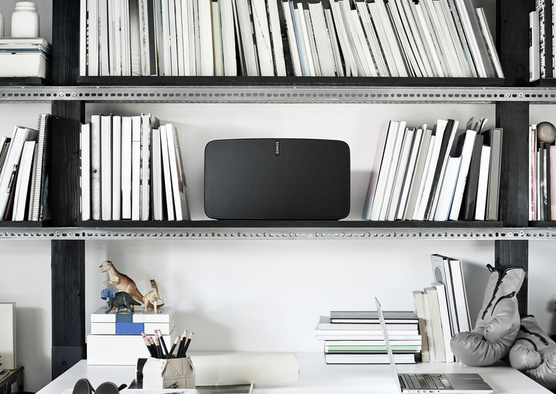
If you remember your parents’ or grandparents’ homes, you may recall giant, sofa sized wooden and cloth speaker towers that used to be the norm for home audio.
Those days are gone, replaced by ever-shrinking speakers that still sound as great as their distant, much taller relatives.
Networked or Wireless Multi-room Speakers
Speaking of Sonos, there’s another feature that’s coming on strong for 2020 and beyond. Speakers that work together in harmony so your music will reach every corner of the house, or, just fill up one room.
Networked or Wireless Multi-room Speakers work by using Wi-Fi or Bluetooth to link up to your phone, and to each other, and they are meant to provide a seamless speaker-to-speaker performance. That means that without wires, and the need for amps or other components (unless you want them), you could be listening to your music on a beautiful set of 2, 3 or 4 or more speakers, depending on your needs. Want to split some speakers off the main system for others to use? No problem. With networked audio, you can choose what audio plays on which speakers at any time.
Smart “listening” technology
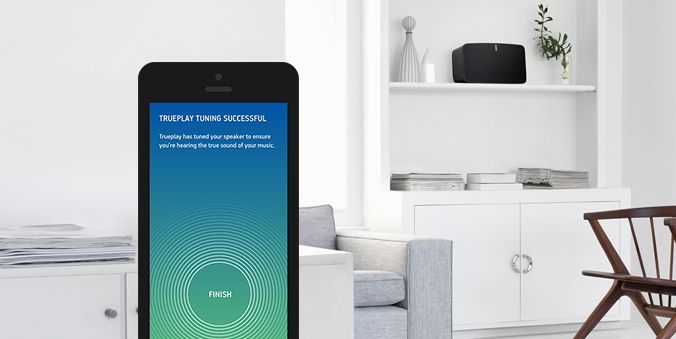 Audiophiles will tell you speaker systems or home theatre audio should to be properly calibrated to optimize sound. While that’s true, technology has also given those of us without an audio savant in the family a gift; smart technology. Speakers, like Sonos in particular can now “listen” to a room; detecting where sound is bouncing (walls, floors) and where it’s being absorbed (large furniture), and can make subtle adjustments for the best sound possible in a particular room.
Audiophiles will tell you speaker systems or home theatre audio should to be properly calibrated to optimize sound. While that’s true, technology has also given those of us without an audio savant in the family a gift; smart technology. Speakers, like Sonos in particular can now “listen” to a room; detecting where sound is bouncing (walls, floors) and where it’s being absorbed (large furniture), and can make subtle adjustments for the best sound possible in a particular room.
Trueplay is a new technology from Sonos that uses the microphone in an iOS/Apple device to measure how sound exists in your particular room. After it listens, it re-calibrates your Sonos speaker to make sure it sounds great no matter where you’ve placed it. Want to read more about this technology? Check out my blog about it here.
Sound from Above / Dolby Atmos
There’s a new sheriff in town when it comes to top-notch audio today. While we’re all likely very familiar with Dolby sound (to oversimplify, it’s basically the original, best and most popular stereo sound system), the company has been working to better their product, and have done so with Dolby Atmos.
We wrote an excellent blog on what Dolby Atmos is and how it works, but to borrow a snippet by way of explanation here, “Atmos technology essentially creates a 3D sound experience that is so immersive and captivating it engages your senses to a higher emotional level. Dolby ATMOS replaces the concept of “channels” with object-based sound design where audio production is all about creating a three dimensional mapping of sound objects moving through space.”
That sounds like fun, right? But you might be wondering how they do it. The key is Atmos systems use the ceiling for more speakers: “those added speakers can be simply overhead ceiling speakers or they could be new Dolby Atmos enabled speakers or add-on modules. The Atmos enabled speakers essentially create a plane of sound above the listener.”
While feeling that soundscape 360-degrees all around us has been the norm for many years, now with Atmos, when a chopper flies overhead, its going to sound like it’s right above you.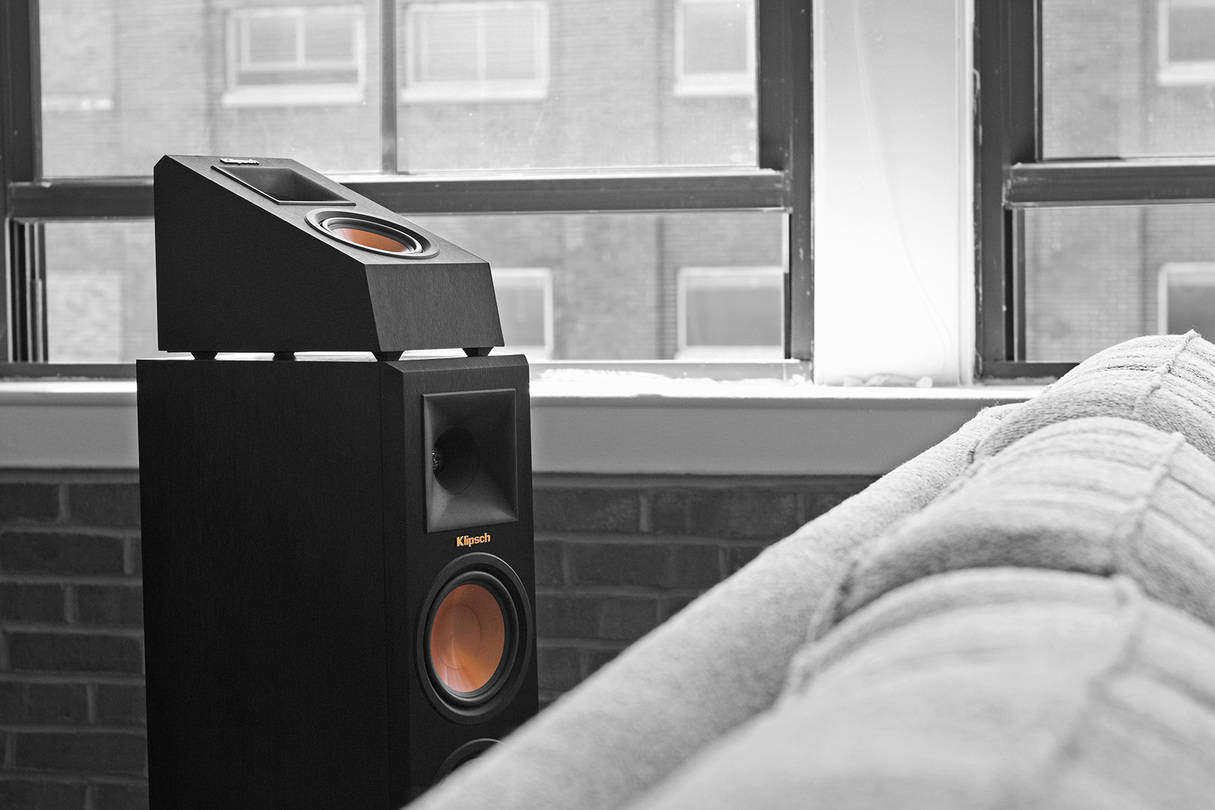
Speakers like those from Klipsch can also mimic that overhead effect by using an ‘elevation channel’ integrated into the top of the speaker to reflect sound off the ceiling to deliver the overhead Dolby Atmos® experience. Those speakers, by Klipsch are already at Best Buy.
Dolby Atmos systems basically add another dimension of sound to your home theatre, giving you a much more realistic sound experience. I for one welcome our new Atmos overlords!
Soundbars make TV better
As we round out our look at new audio and home theatre advances, it’s worth looking at sound bars. I know some folks think they’re a piece of useless extra technology, because I used to be one of them. I didn’t understand why a perfectly good, brand new TV needed a whole extra speaker component, when it came with speakers built right in.
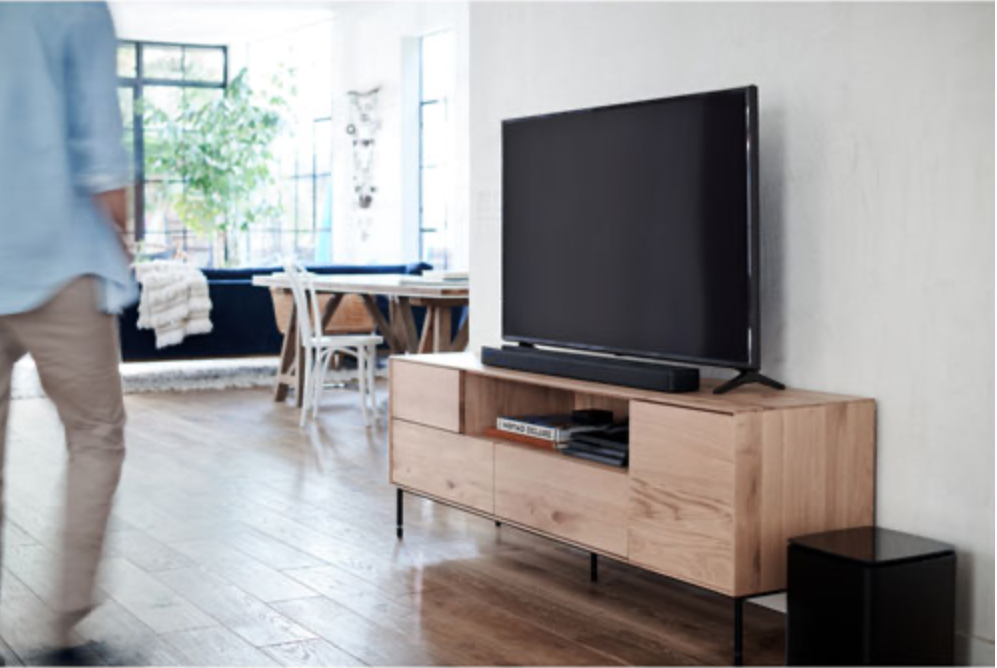 The truth is those built in speakers on new TVs are a product of our desire for ever thinner TVs; because the sets are built to be so thin and very light, they just can’t handle audio properly. Most often built in speakers in televisions today are shallow and tinny sounding, and are often pointing to the side or to the back, meaning you’re not getting anything close to a true audio picture through them, and most of the sound that is coming through them is being directed away from you or is being muffled.
The truth is those built in speakers on new TVs are a product of our desire for ever thinner TVs; because the sets are built to be so thin and very light, they just can’t handle audio properly. Most often built in speakers in televisions today are shallow and tinny sounding, and are often pointing to the side or to the back, meaning you’re not getting anything close to a true audio picture through them, and most of the sound that is coming through them is being directed away from you or is being muffled.
That’s where the sound bar comes in. They are made to not just handle a television’s audio signal, but to improve it, all in one compact and easy package.
There’s more to come on exactly why sound bars should be on your purchase list when you buy a flat screen TV, in a week or two here on the blog so check back.



































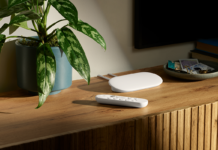



I notice some surround soundbars (that bounce rear channels off walls) are now bouncing off ceilings too for the Atmos results. Love the surround soundbars (sound projectors) as they are wireless and you don’t need to charge batteries.
I’d love to get my hands on one to try! Do you have one, XL? If so, which brand?
Best Buy used to sell the Yamaha YSP 2200 sound projector. I have one of these.
If you look at the Yamaha website, they sell several sound projector for different budgets. The YSP-5600 is Atmos certified
https://www.google.ca/search?q=yamaha+atmos+sound+projector
These look pretty sweet. I may now need a soundbar upgrade!
Comments are closed.